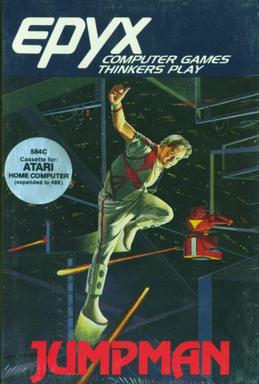
Jumpman is a platform game written by Randy Glover and published by Epyx in 1983. It was developed for the Atari 8-bit computers, and versions were also released for the Commodore 64, Apple II, and IBM PC compatibles.
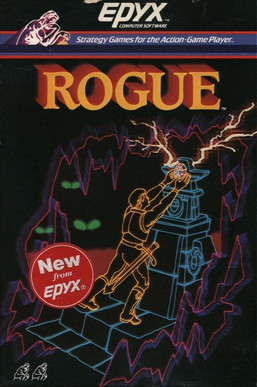
Rogue is a dungeon crawling video game by Michael Toy and Glenn Wichman with later contributions by Ken Arnold. Rogue was originally developed around 1980 for Unix-based minicomputer systems as a freely distributed executable. It was later included in the Berkeley Software Distribution 4.2 operating system (4.2BSD). Commercial ports of the game for a range of personal computers were made by Toy, Wichman, and Jon Lane under the company A.I. Design and financially supported by the Epyx software publishers. Additional ports to modern systems have been made since by other parties using the game's now-open source code.
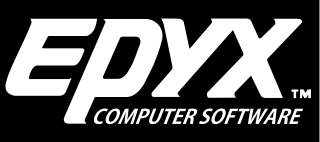
Epyx, Inc. was a video game developer and video game publisher active in the late 1970s and 1980s. The company was founded as Automated Simulations by Jim Connelley and Jon Freeman, originally using Epyx as a brand name for action-oriented games before renaming the company to match in 1983. Epyx published a long series of games through the 1980s. The company is currently owned by Bridgestone Multimedia Group Global.

Choplifter is a military themed scrolling shooter developed by Dan Gorlin for the Apple II and published by Broderbund in 1982. It was ported to Atari 8-bit computers the same year and also to the VIC-20, Commodore 64, Atari 5200, ColecoVision, MSX, and Thomson computers.

Temple of Apshai is a dungeon crawl role-playing video game developed and published by Automated Simulations in 1979. Originating on the TRS-80 and Commodore PET, it was followed by several updated versions for other computers between 1980 and 1986.
Jon Freeman is a game designer and co-founder of software developer Automated Simulations, which was later renamed to Epyx and became a major company during the 8-bit era of home computing. He is married to game programmer Anne Westfall, and they work together as Free Fall Associates. Free Fall is best known for Archon: The Light and the Dark, one of the earliest titles from Electronic Arts.

Rescue at Rigel is a 1980 science fiction role-playing video game written and published by Automated Simulations. It is based on a modified version of their Temple of Apshai game engine, which was used for most of their releases in this era. The game was released for the Apple II, IBM PC, TRS-80, PET, VIC-20, and Atari 8-bit computers.

Aaargh! is a single-player action video game in which the player controls a giant monster with the goal of obtaining eggs by destroying buildings in different cities across a lost island. It was designed for Mastertronic's Arcadia Systems, an arcade machine based on the custom hardware of the Amiga, and was released in 1987. It was ported to a range of other platforms and released on these across 1988 and 1989. Electronic Arts distributed the Amiga version of the game.

Universe is a science fiction space trading and combat game by Omnitrend Software. It was created by William G M Leslie and Thomas R Carbone. The first version was programmed in valFORTH on an Atari 800, based on a board game created by Leslie. It was Omnitrend's first game.

Star Raiders II is a space combat simulator released in 1986 for Atari 8-bit computers as a sequel to 1979's Star Raiders, which was the killer app for the system. The game was originally developed as part of a tie-in with the movie The Last Starfighter, which featured an arcade game of the same name as part of its plotline. Versions for the Atari 5200 and the Atari 8-bit computers were developed in 1984, although those were never released. Later the tie-in was dropped, and the game converted into a sequel to Star Raiders by changing a number of gameplay elements. The gameplay remained different from the original Star Raiders.
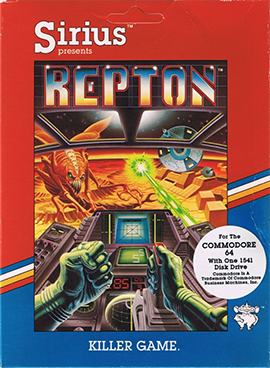
Repton is a Defender-inspired scrolling shooter written by Dan Thompson and Andy Kaluzniacki for the Apple II and published by Sirius Software in 1983. It was ported to the Atari 8-bit computers, and Commodore 64.
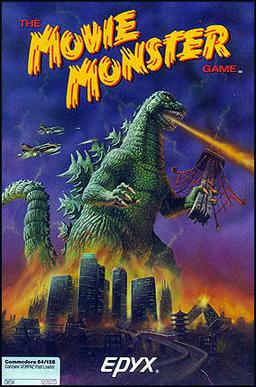
The Movie Monster Game is a computer game released by Epyx for the Apple II and Commodore 64 in 1986. The game offers a variety of scenarios, playable monsters, and cities to demolish. The monsters are based on popular movie monsters such as The Blob, Mothra, the Stay Puft Marshmallow Man, and the Transformers, and Epyx was able to officially license Godzilla.

Starfleet Orion is a 1978 science fiction strategy game written and published by Automated Simulations. It appears to be the first space-themed strategy game sold for microcomputer systems. The game was originally written in BASIC for the Commodore PET, but later ported to other early home computer platforms including the TRS-80 and Apple II. The game was something of a success, leading to a string of successes for the company, notably the major hit Temple of Apshai.

Invasion Orion is a 1979 science fiction strategy game written and published by Automated Simulations. It is one or two player sequel to the original two-player Starfleet Orion which was published in late 1978. The game was written in BASIC for the Commodore PET and TRS-80 and ported to the Atari 8-bit computers and Apple II.

Legionnaire is a computer wargame for Atari 8-bit computers created by Chris Crawford released through Avalon Hill in 1982. Recreating Julius Caesar's campaigns in a semi-historical setting, the player takes command of the Roman legions in real-time battles against the barbarians.
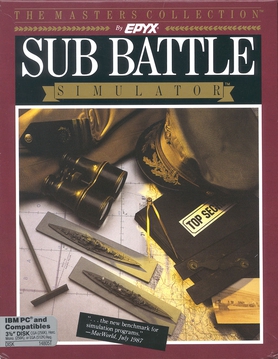
Sub Battle Simulator is a naval combat simulation game released by Epyx in 1987. The game was developed by Digital Illusions, Inc. It was released for the Amiga, Apple IIGS, Commodore 64, Atari ST, Macintosh, MS-DOS, and the Tandy Color Computer 3.
Dunjonquest is a series of single-player, single-character fantasy computer role-playing games by Automated Simulations. Temple of Apshai was the most successful and most widely ported game in the series. The games relied on strategy and pen & paper RPG style rules and statistics.

The Datestones of Ryn is a role-playing video game released in 1979 for the Apple II, Commodore PET, and TRS-80 by Automated Simulations. The Datestones of Ryn was the second title in the Dunjonquest series, but was actually a prequel to the first game, Temple of Apshai. Like its predecessor, this game was written in BASIC.
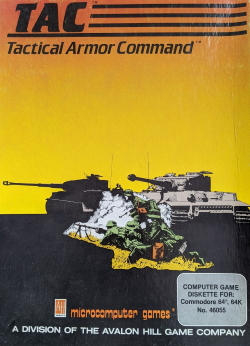
T.A.C. is a top-down tactical combat videogame published by Avalon Hill in 1983 for Apple II, Atari 8-bit, Commodore 64 and IBM PC. The game takes place during the Second World War and simulates clashes involving the United States, the USSR, Germany and the United Kingdom.


















